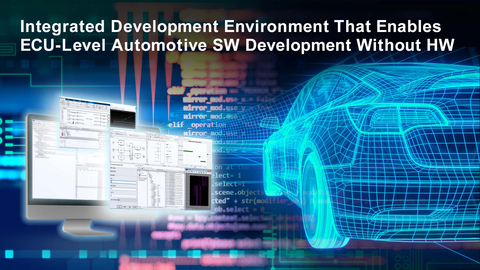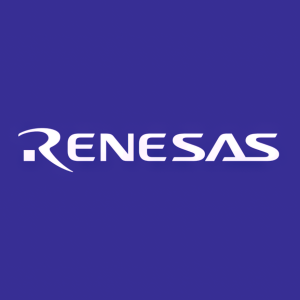Renesas Launches Integrated Development Environment That Enables ECU-Level Automotive Software Development Without Hardware
Renesas Electronics Corporation (TSE: 6723) has launched an integrated software development environment aimed at speeding up the creation of automotive Electronic Control Units (ECUs). This new platform supports co-simulation, debugging, trace tools, and high-speed simulation, allowing engineers to develop software without needing actual hardware. The initiative aligns with the automotive industry's shift toward software-first development and aims to enhance early verification and validation of software. Initial tools are available for R-Car S4 and RH850/U2A devices.
- Launch of a new integrated development environment for automotive ECUs.
- Supports co-simulation and debugging, enhancing software development efficiency.
- Aligns with industry trends toward software-first product development.
- Initial availability of tools for R-Car S4 and RH850/U2A devices.
- None.
Insights
Analyzing...
New Integrated Software Development Environment Supports Multi-Chip ECUs, Reducing Development Time and Post-Design Modifications

“Renesas is committed to providing a development environment that helps our automotive customers realize their vision for Software First, while continuing to support their evolution toward Shift Left software development," said
Integrated Development Environment for
Renesas’ integrated development environment with multi-device support enables software development at the ECU level, adding additional value in vehicles and contributing to the Software First approach. By providing a simulation environment from early stages of product development, the platform enables verification and application development before production of actual devices and ECUs, realizing the Shift Left concept.
The integrated environment offers the following development support:
1. Co-simulation environment for multi-devices facilitating optimal system design
By integrating and connecting simulators such as the R-Car Virtual Platform, which was previously provided for single-chip individual devices such as SoCs and microcontrollers, Renesas is delivering a new simulation environment for multi-device operation. Designs can now be optimized by balancing different application functions and incorporating software verification at the systems level. A development tool that automatically generates software code for devices and a simulation environment for verification from MATLAB® /Simulink® models will also be available. These tools will allow engineers to evaluate performance and start application development before hardware and ECUs are in production.
2. Debug and trace tool for multi-devices to visualize problems
To make it easy to visualize how software operates internally, Renesas is providing a debug and trace tool that allows simultaneous and synchronized execution, execution control by breakpoints and information tracing for ECUs containing multiple devices. With this tool, users can visualize processing flows, evaluate performance profiles, and anticipate problems that may arise from operating multiple devices which are intricately linked within the same ECU. Renesas plans to implement the same functionality mentioned above (1) in the multi-device co-simulation environment so that debugging and tracing can be performed on a computer without an ECU.
3. High-speed simulator for software development that achieves rapid and large-scale simulations
Typically, in ECU-level simulations, the target software tends to be large and the simulation execution takes a long time. This new high-speed simulator is based on QEMU, an open-source virtual environment that models SoCs and microcontrollers at a high level of abstraction, enabling faster ECU-level simulation of complex software.
4.
This software enables optimal distribution of application functions to CPUs and IPs inside different SoCs and microcontrollers in an ECU, maximizing hardware performance. With this software, engineers can develop applications rapidly, without being constrained by the ECU hardware configuration. For example, developers can add an AI accelerator to an existing ECU to boost system performance, without having to re-design the application to accommodate the new device.
The new development platform is designed to reduce the impact on the environment by providing a turn-key solution that accelerates time to market and saves energy.
Availability
-
Co-simulation environment for multi-devices (Available today)
www.renesas.com/software-tool/co-simulation-environment-multi-devices -
Debug and trace tools for multi-devices (Available today)
www.renesas.com/software-tool/debug-and-trace-tools-multi-devices -
High-speed simulator for software development (Available in
December 2022 )
www.renesas.com/software-tool/high-speed-simulator-software-development -
Distributed processing software for multi-devices (Available in
December 2022 )
www.renesas.com/software-tool/distributed-processing-software-multi-devices
About
(Remarks) MATLAB and Simulink are registered trademarks of
View source version on businesswire.com: https://www.businesswire.com/news/home/20220927005549/en/
Media Contacts:
+ 1-408-887-9006
akiko.ishiyama.xf@renesas.com
Source:







